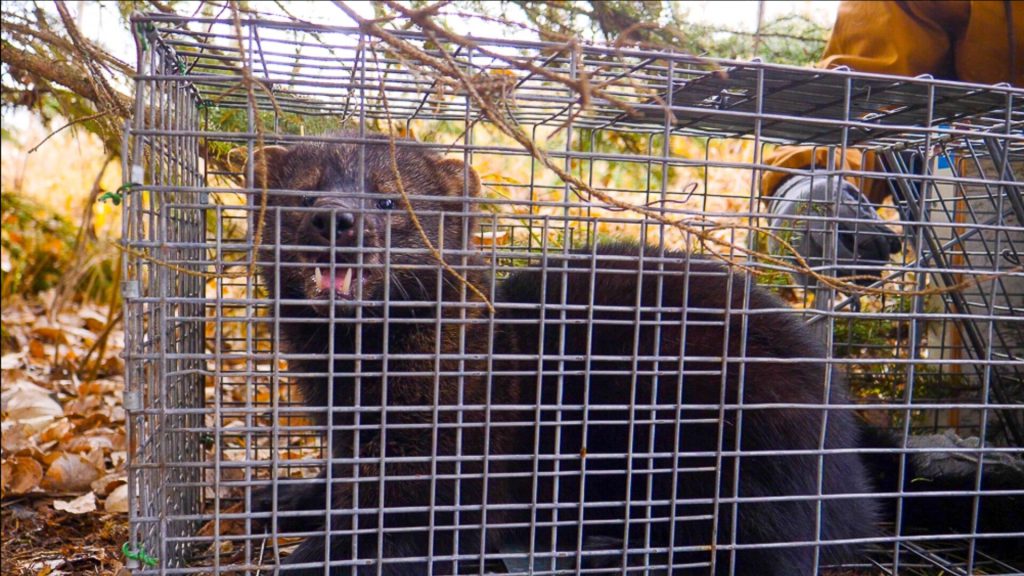One member of the weasel family, which was thought to have gone extinct two centuries ago, may have actually just been really good at hiding. The Ohio Department of Natural Resources just reported that the body of a fisher was found along the roadside near Kent State University.
Fishers, a mink-like mammal, was overhunted in Ohio and other parts of the country. The last of these animals disappeared from the state more than two centuries ago … or so it was thought. Is the fisher making a comeback? Let’s find out.
What Are Fishers?
Fishers are small, meat-eating mammals that were once very common in the forests of North America. They belong to the same family as weasels, martens, otters, badgers, and minks. As the name suggests, these animals are fond of fish and are skilled at fishing.

During the winter months, the fur of fishers thickens. It was ideally suited for the fur trade of the 1700s and 1800s. The high value placed on fisher pelts, along with the ease of trapping these animals, led to over trapping.
Unregulated Trapping and Declining Numbers
For more than two hundred years, the trapping industry was unregulated. In the quest for more and more animal pelts, hunters and trappers harvested as many animals as they could with little regard for maintaining the population numbers.

By the early 1900s, fishers were scarce in many areas of the country. The animals’ once vast range had been reduced, especially on their outer fringes. In the last 80 years, there have only been a few confirmed sightings of fishers in Ohio.
The Popularity of Fisher Fur
During the 1800s, fisher fur was quite popular as a fashion accessory. It was used to make fashionable scarves, collars, and neck pieces.

Fisher tails were in high demand for use in making spodiks. These are special hats worn by Hasidic Jews during religious ceremonies.
A Nuisance Animal
Fishers were also considered to be a nuisance animal. The mammals frequently killed farmers’ chickens and even preyed on house cats and small dogs. Because of this, farmers were often encouraged to get rid of fishers living around them.

The animals were shot, trapped, and even poisoned, simply to prevent them from becoming a nuisance to farmers. Sadly, even as their numbers declined, people clung to the attitude that fishers were pests and should be killed on sight.
Are Fishers Ferocious?
Fishers are not very large. Males top out at about 13 to 15 pounds. Yet they can be ferocious and intimidating. They make hissing and growling noises when provoked.

When cornered, fishers behave aggressively. They rarely attack humans, but there have been a few reports of encounters between fishers and young children. Fortunately, none of them have caused deaths.
An Odd-Looking Roadkill
Last week, the Ohio DNR got a report of an odd-looking roadkill not far from the campus of Kent State University in northeastern Ohio. Upon inspection, the dead animal appeared to be a fisher.

The animal’s corpse was sent for testing and an autopsy was done. The wildlife experts at Ohio’s DNR were both pleased and baffled by the discovery of the fisher, especially since they thought the mammal was extinct in Ohio for at least 200 years.
Where Did the Fisher Come From?
The most likely explanation is that the fisher found in Ohio wandered into the state from nearby Pennsylvania. In the last few decades, Pennsylvania has worked to reestablish and rebuild the fisher population in the state.

The program has been so successful that Pennsylvania has recently allowed a highly regulated fisher trapping season. The wildlife experts will continue to monitor the population of fishers in Pennsylvania to ensure that populations remain stable.
Pennsylvania Owes the Success of its Program to Surrounding States
According to the Pennsylvania Department of Natural Resources, much of the success of Pennsylvania’s fisher reintroduction program “is the direct result of natural expansion from adjacent states.”

It continued, “In 1969, West Virginia reintroduced 23 fisher obtained from New Hampshire. Fisher populations in West Virginia have since expanded throughout that state and into western Maryland, northern Virginia, and southwestern Pennsylvania.”
Bringing Back the Fisher
In 1979, New York reintroduced fishers into the Catskills. Some of the fishers in Pennsylvania may have come from this program.

Plans are underway to reintroduce the mammals to many areas where fishers were once plentiful, such as the New England states and the Great Lakes states. Division of Wildlife research technician Laurie Brown stated, “I think it’s great that we’re starting to see them more and more and get more reports of them in Ohio.”
Cause for Celebration
Wildlife experts in Ohio are thrilled to see fishers making a comeback. Since the animals were over-trapped and over hunted two centuries ago, the loss of the fisher in Ohio has had a domino effect on other animals in the region.

As wildlife biologists tell us, all animals belong to a complex web of life. Together, they maintain the balance of nature. When one animal is removed from the web, the impact can be felt by others.
Human-Induced Extinction
The actions of humans have led to an acceleration of animal extinctions. Through a combination of over hunting and over trapping, as well as habitat loss, humans have had a detrimental impact on the environment.

According to the International Union for Conservation of Nature’s Red List, there are more than 44,000 species currently under threat of extinction. The fisher appears poised to make a comeback, at least in the state of Ohio.






